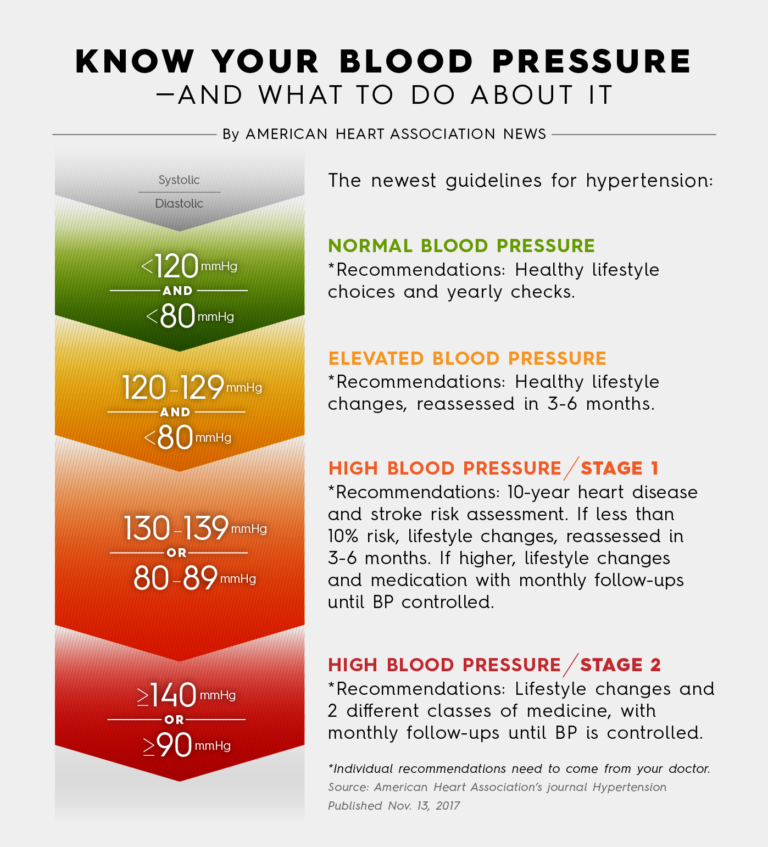The American Heart Association, the American College of Cardiology and nine other groups redefined high blood pressure as a reading of 130 over 80, which is a reduction from 140 over 90. The change in definition, the first in 14 years, means that 46 percent of U.S. adults now will be considered hypertensive compared to 32 percent under the old guidelines.
Know your blood pressure
Many of us have “white coat syndrome.” This phenomenon is one where patients exhibit higher blood pressures while visiting the doctor’s office and lower readings when at home or in other settings.
The solution to this problem is to track your own blood pressure readings. Best is if you invest in a blood pressure cuff for your home. Keep a simple chart that notes time of day, any comments you’d like to add, and the pressure reading.
Blood pressure varies
People find that blood pressure varies from morning to evening – with evening readings being lower. This is normal.
Blood pressure starts to rise a few hours before you wake up, typically peaks in the middle of the afternoon and then in the evening it drops again. Many things can affect blood pressure readings, including:
- Misplacement of the cuff
- Caffeine
- Stress
- Anxiety
- Medications
- Shift work
- Tobacco use
Reducing blood pressure
Losing weight, cutting back on alcohol consumption, exercise and ceasing to smoke are all ways to reduce your blood pressure.
If you notice you have blood pressure readings between 130 to 139 over 80 to 89, contact your doctor. The American Heart Association notes that hypertension (high blood pressure) accounts for more heart disease and stroke deaths than almost all other preventable causes – second only to smoking.

